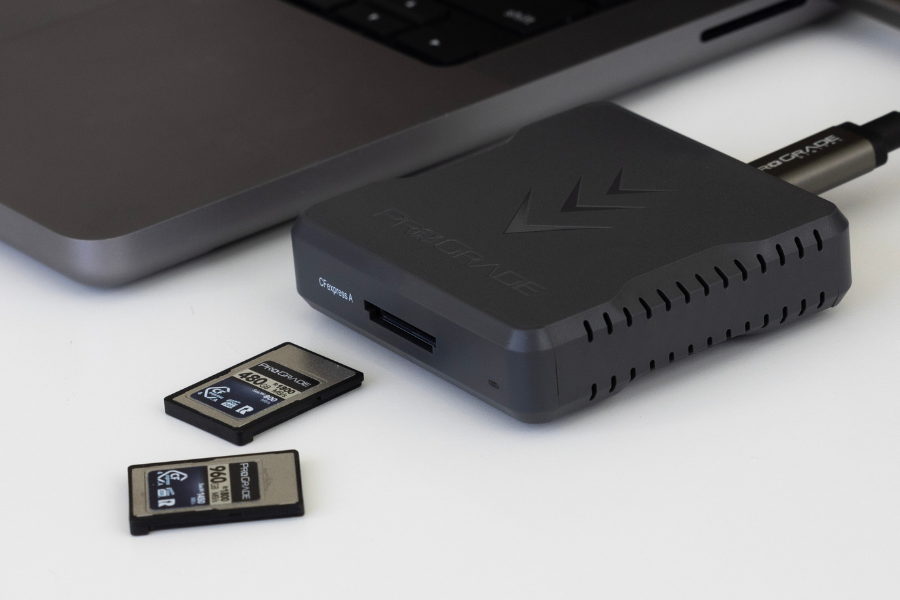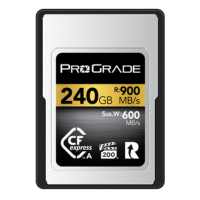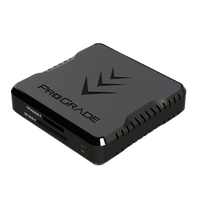With the evolution of imaging technology, photos and videos not only gain unprecedented sharpness and clarity but also produce significantly larger file sizes. This escalation means that both professionals and hobbyists are now generating vast volumes of high-resolution content, making the ability to manage such data effectively more critical than ever.
Whether you’re capturing breathtaking landscapes, documenting fast-paced events, or producing detailed client projects, the ability to quickly and securely transfer and backup your files can significantly impact your productivity and the safety of your invaluable work.
This article is all about effective memory card management for photographers and videographers. We will explore how incorporating advanced memory card management strategies into your routine can save you time, reduce stress, and ensure your creative output is securely stored and readily accessible.
Identifying and Addressing Workflow Bottlenecks
In photography and videography, managing workflow efficiently means ensuring that each component—from your camera to your backup storage—is optimized to work together seamlessly. By taking a holistic view of your workflow, you can identify the weakest links and make targeted improvements. Here’s how you can pinpoint bottlenecks in your workflow and implement the right solutions:
Step 1: Assess Your Current Setup
Start by reviewing each component of your workflow, from shooting to data storage. Consider not just your camera, memory cards, data transfer methods, storage devices, and backup solutions, but also reflect on your actual needs. Evaluate whether your current equipment setup meets your creative and professional demands or if it dictates how you work. Are there steps in your process that feel cumbersome or inefficient but have become ‘normal’ just because you’ve grown accustomed to them?
Identifying areas where delays or issues commonly occur isn’t just about recognizing what’s slow—it’s also about understanding what could be optimized to better align with how you want to work. This step is essential in pinpointing the aspects of your workflow that need rethinking or upgrading to make your process as smooth and efficient as possible.
Step 2: Identify Common Bottlenecks
Now that you’ve assessed (perhaps even redesigned) your overall workflow, the next step is to delve deeper into specific stages of your process and identify where inefficiencies lie. When you pinpoint an area that feels sluggish, examine each component involved in that stage.
For example, if transferring data from a card to a computer feels lagging, consider the roles played by your laptop’s ports, the cables you use, your card reader, and the speed of your memory cards. Similarly, if your backup process is time-consuming, don’t just check if your external storage is fast enough, but also make sure that your backup software is efficient and see if your storage solutions are adequately scaled to your project sizes. Each aspect of your workflow deserves scrutiny.
By analyzing every link in these chains, you can more accurately identify the true bottlenecks that hinder your workflow, allowing for more targeted improvements.
Step 3: Implement Targeted Solutions
Once you’ve identified your primary bottlenecks, focus on the solutions that will make the most significant impact. In other words, directing your efforts where they will have the most impact can yield immediate benefits.
Imagine two buckets of water in front of you: one is full to the brim, and the other is nearly empty. If you aim to gather as much water as quickly as possible, you naturally choose to scoop from the full bucket first. Each effort there results in a full cup of water, maximizing your efficiency with minimal effort.
This analogy perfectly illustrates the principle of focusing on the most impactful areas of your workflow. In the context of photography and videography, spending time and resources upgrading parts of your already nearly optimized workflow will usually not yield substantial improvements. Meanwhile, addressing areas significantly lacking can dramatically enhance your efficiency and productivity.
By identifying and investing in these “full buckets” within your workflow, you tap into untapped reserves of efficiency, reaping substantial rewards for each unit of effort you invest. This strategic approach ensures that you not only solve the most pressing bottlenecks but also maximize the return on your investments in technology and tools, keeping your focus on capturing great images rather than managing workflow frustrations.
The Role of Memory Card Readers in Workflow Efficiency
Memory card readers are often the most overlooked links in our workflow, yet they represent one of the most effortless gains—a “full bucket” in our workflow optimization analogy. This simple and affordable tool can be a linchpin for enhancing efficiency, primarily because it addresses several critical aspects of the digital imaging process simultaneously.
1. Faster and More Reliable Data Transfer
One of the primary advantages of using a card reader lies in its ability to facilitate fast and reliable data transfers. Unlike direct camera connections, which are limited by the camera’s data transfer capabilities and capabilities of the interface cable, card readers are precision-engineered to move large files, such as high-resolution photos and 4K or 8K videos, from a memory card to a computer.
For example, Canon’s flagship EOS 3 cameras ship with an IFC-100U interface cable that is capable of transferring 1.25GB/s. Meanwhile, these cameras use CFexpress Type B memory cards with read speeds up to 3.55GB/s. So, although 1.25GB/s is by no means slow, it is still only one-third of the memory card’s true potential. At the same time, the ProGrade Digital CFexpress Type B Card Reader can transfer data up to 5GB/s, allowing you to take full advantage of the fast memory card with ample headroom to spare.
Considering that many cameras ship with even slower cables, like the USB 3.0 Standard-A to USB 3.0 Micro-B interface cable, which can transfer only 500MB/s (0.5GB/s), the benefits of card readers, especially high-speed workflow readers become even more noticeable.
2. Simultaneous Importing From Multiple Memory Cards
Advanced workflow readers like the Dual-Slot SD Card Reader or Dual-Slot MicroSD Card Reader by ProGrade Digital have multiple memory card slots, allowing not only lightning-fast transfer speeds but also the capability to download data from two cards at the same time.
This feature is incredibly beneficial during busy shooting days or back-to-back events, as the simultaneous transfer of photos and videos from two memory cards literally makes the data transfer twice as fast.
Moreover, the availability of various card readers ensures you can create a setup that perfectly matches your needs. Downloading data from multiple cards simultaneously is not limited to the same type of cards; instead, there are dual-slot card readers designed for all popular memory card combinations. For instance, there are readers available that accommodate both CFexpress Type A and SD cards or CFast and SD Cards, among others. This capability allows you to simultaneously transfer data from two different types of memory cards, optimizing your workflow by accommodating your camera’s unique memory card requirements.
3. Keeps Cameras Ready for Action
Among all the benefits of card readers, this one is probably the most obvious. By using a card reader, you keep your camera free for shooting, avoiding unnecessary downtime. Especially during critical moments of a shoot, having your camera ready to go rather than tethered to a laptop for data transfer is invaluable for capturing spontaneous or time-sensitive shots.
Furthermore, regularly connecting and disconnecting your camera for data transfer not only consumes valuable shooting time but also subjects your camera’s ports to potential wear. Using a card reader minimizes this risk by eliminating the need to frequently handle the camera, possibly extending its operational lifespan.
Your camera is designed for shooting and not transferring data. Leaving that task to card readers allows you to focus more on capturing stunning images and less on the mechanics of data handling. This strategic use of technology not only saves time but also enhances the overall quality and security of the photographic workflow.
Advantages of Using Multiple Memory Cards
Another surprisingly overlooked “full bucket” in optimizing photography and videography workflows—particularly evident when comparing amateur practices with those of professionals—is the strategic use of multiple memory cards.
Employing multiple cards in your workflow not only allows you to keep on shooting if one card gets full, but it also streamlines the organization of shoots. Different cards can be designated for various segments of an event or project. For example, wedding photographers can assign one card for ceremonies and another for reception. Travel photographers can separate cards for different days or locations of their journey.
This approach not only facilitates easier post-processing by helping to categorize, archive, and access specific parts of your work efficiently but also enhances the overall management of content. Sorting through footage becomes quicker and more intuitive when each card corresponds to a specific genre, project, or date.
Using multiple memory cards also distributes your images and videos across different storage units, significantly reducing the risk of total data loss. Let’s face it, accidents happen. Spreading your data minimizes the impact of unforeseen failures. This precaution is paramount during long shoots or when capturing irreplaceable events, where losing data can have severe consequences.
Side note: Because of everything mentioned above and considering the needs of industry professionals, all ProGrade Digital memory cards have a two-pack option with a significant discount built in—providing a practical and cost-effective solution for managing data more efficiently.
Efficient Data Transfer and Management Tips
Efficient data transfer in photography and videography is necessary for maintaining a streamlined workflow, especially when dealing with high-resolution images and video. At times, however, optimizing your workflow is less about the equipment you use and more about refining the processes you rely on. If this is the case, you can significantly enhance your data management and achieve smoother operations by fine-tuning these processes. Here are three tips to consider that can help smooth out any hiccups and boost the efficiency of your data management:
1. Consider Using File Transfer Software
Efficient data transfer in photography and videography is necessary for maintaining a streamlined workflow, especially when dealing with high-resolution images and video. Utilizing file transfer or dedicated ingest software can significantly improve the speed and reliability of moving data between your devices and computer systems.
These tools are designed to optimize data transfers, making it easy to create copies and backups, as well as archive and organize files using metadata. This can be particularly beneficial when handling large batches of high-resolution images or videos.
In addition, you can use ingest software to eliminate unnecessary duplicates, select specific file types for transfer, or create file integrity checksums using MD5, XXH, and SHA1 for data integrity.
2. Consider Using Memory Card Maintenance Software
The NAND flash memory of your card can get fragmented over time, especially after frequent use. This can diminish the card’s capacity and put it through unnecessary erase-write cycles, slowing its performance and shortening its lifespan.
Memory card maintenance software can play a critical role in keeping your memory cards at peak performance. Programs like Refresh Pro allow you to monitor the health of your memory cards and defragment them in seconds, ensuring they function optimally. Regular use of such tools can help maintain the speed and longevity of your memory cards, preventing slowdowns and data errors during critical moments.
3. Regularly Update Firmware
Keeping the firmware of your cameras, memory cards, and other related equipment up to date is vital for maintaining their efficiency and security. Manufacturers often release firmware updates to fix bugs, enhance performance, and introduce new features. Regular updates ensure you are getting the best performance and the most stable operation from your gear.
Conclusion: Memory Card Management for Photographers and Videographers
Optimizing your workflow in photography and videography involves more than just having the right equipment; it requires a thoughtful approach to managing your data efficiently and securely. By integrating advanced card readers, using multiple memory cards, and refining the processes you rely on, you can significantly enhance your workflow’s efficiency and reliability.
These practices not only save time and reduce stress but also protect your valuable creative work from unexpected losses. Remember, a well-organized and efficiently managed workflow allows you to focus more on your creative pursuits and less on the logistics of data management, helping you achieve your artistic vision with greater ease and confidence.





